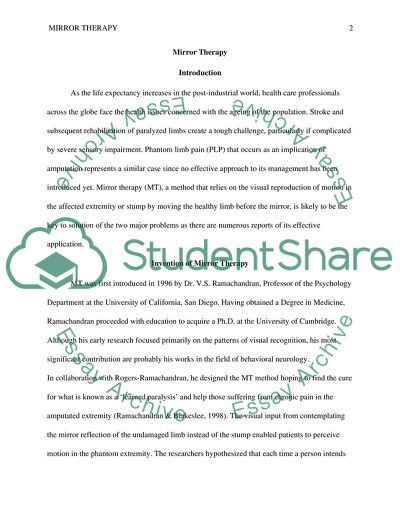Cite this document
(Mirror Therapy Research Paper Example | Topics and Well Written Essays - 1500 words, n.d.)
Mirror Therapy Research Paper Example | Topics and Well Written Essays - 1500 words. https://studentshare.org/health-sciences-medicine/1880076-mirror-therapy-on-amputation-and-stroke-patients
Mirror Therapy Research Paper Example | Topics and Well Written Essays - 1500 words. https://studentshare.org/health-sciences-medicine/1880076-mirror-therapy-on-amputation-and-stroke-patients
(Mirror Therapy Research Paper Example | Topics and Well Written Essays - 1500 Words)
Mirror Therapy Research Paper Example | Topics and Well Written Essays - 1500 Words. https://studentshare.org/health-sciences-medicine/1880076-mirror-therapy-on-amputation-and-stroke-patients.
Mirror Therapy Research Paper Example | Topics and Well Written Essays - 1500 Words. https://studentshare.org/health-sciences-medicine/1880076-mirror-therapy-on-amputation-and-stroke-patients.
“Mirror Therapy Research Paper Example | Topics and Well Written Essays - 1500 Words”. https://studentshare.org/health-sciences-medicine/1880076-mirror-therapy-on-amputation-and-stroke-patients.


